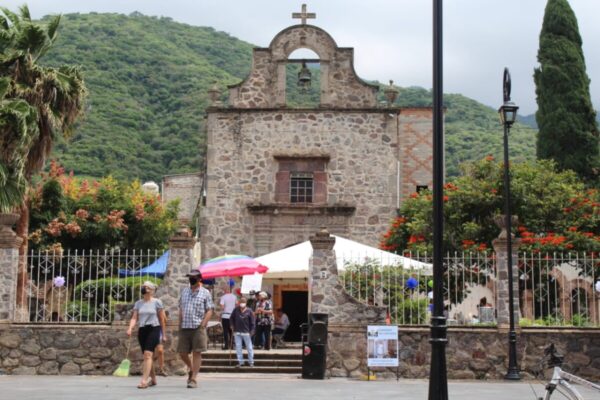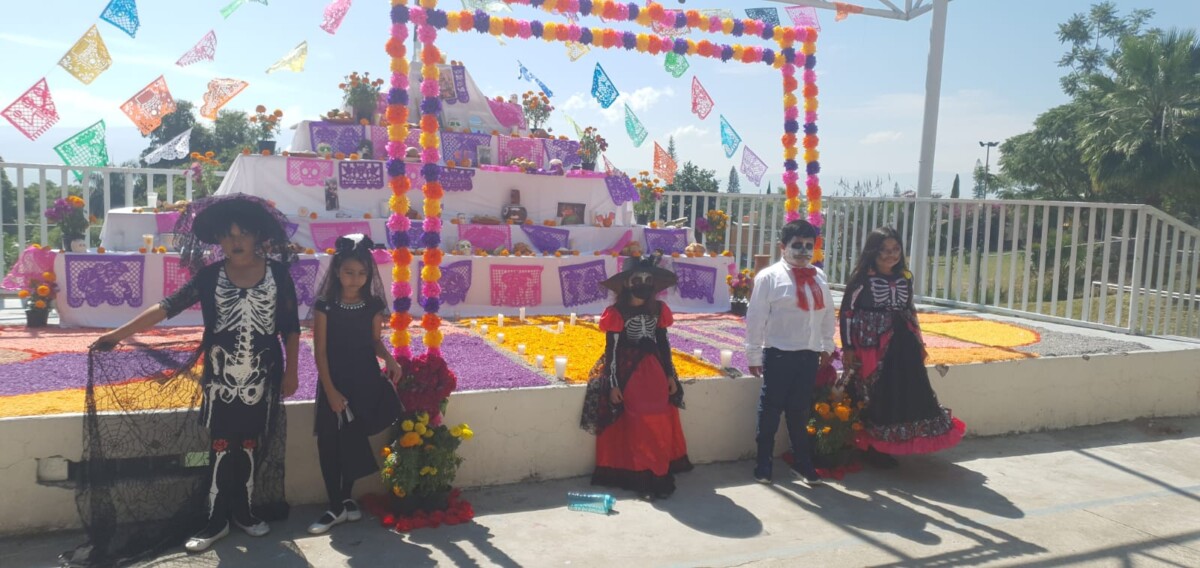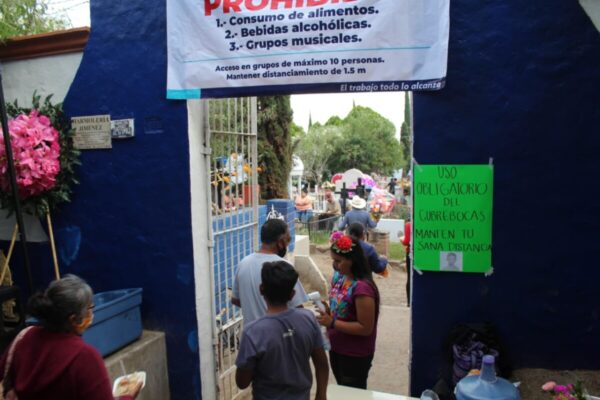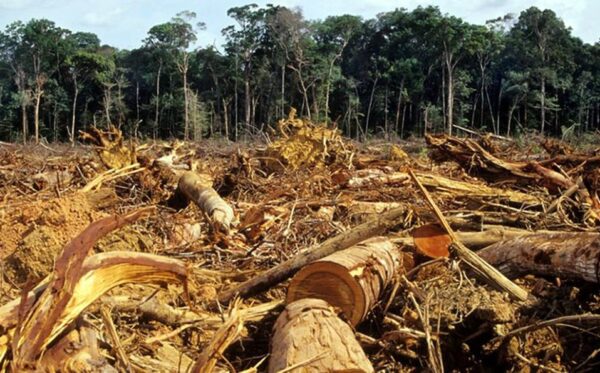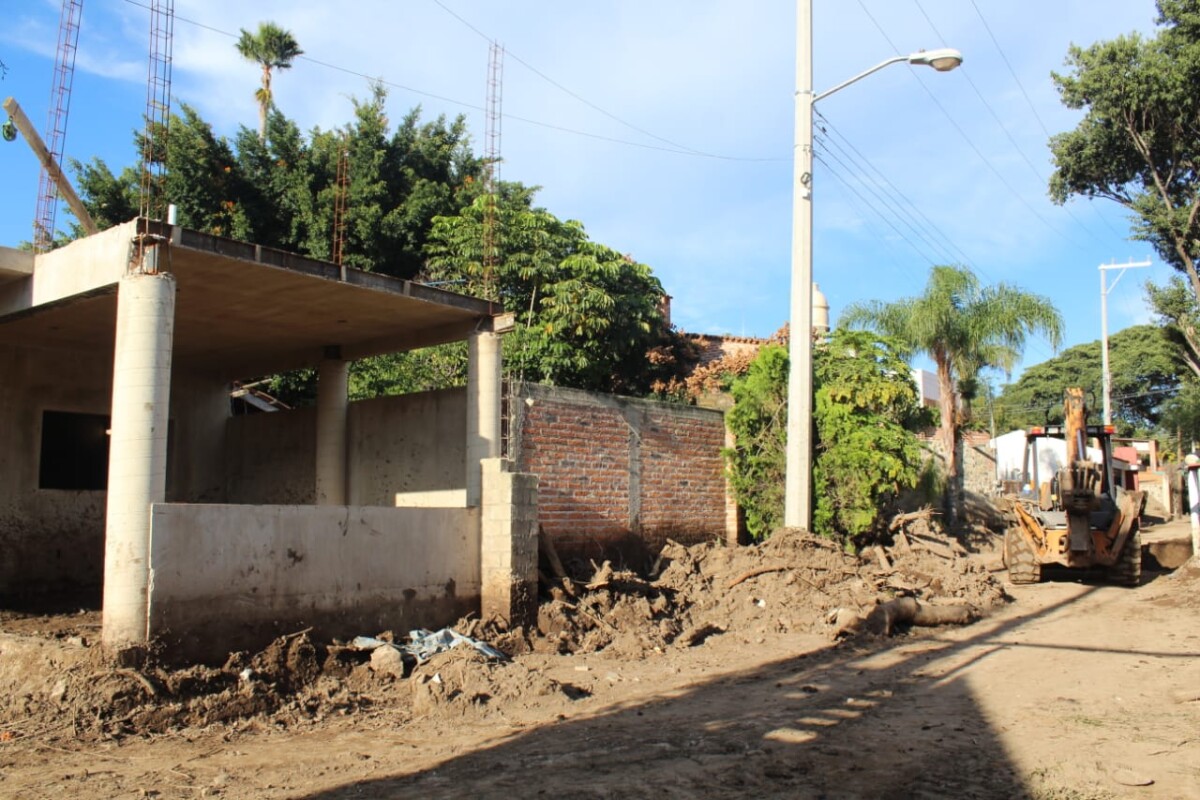noticias
Chapel restoration project is close to starting
The Chapel of Our Lady of the Rosary, in Ajijic, is close to starting the restoration project
Sofía Medeles (Ajijic, Jal.)- The project for the restoration of Ajijic’s Chapel of Our Lady of the Rosary is very close to starting, and after four fundraising events, the group “Sumando Voluntades” or Summoning Volunteers is ready to take the next step.
Their most recent event was the seventh annual Run for the Rosary, held on the day of the Virgin of the Rosary, October 31, with 180 runners participating in the race. The race and the fair held on the same day raised 40 thousand pesos, giving a total of approximately 350 thousand pesos that the group has raised to start working.
The architect in charge of the project, Josué Ramos, said that the restoration project was presented to the National Institute of Anthropology and History (INAH) and needs some modifications, however, the capital raised is enough to get started.
«They asked us to revise the structural project to the specifications provided by the architect of the INAH. The architect said that we don’t have to spend all the capital in the first stage since they were quite simple things to start with,» Josué asserted.
He also added that they have more events in mind, although they have yet to plan the details or set the date. In the short term, they plan to focus on the architectural survey and the necessary restructuring.
«We will continue to raise funds for this project. For the moment, we are thinking of selling a black and white poster with the Virgin of the Rosary and the little chapel in the background, which we will start selling during the patron saint festivities and whenever we have the opportunity», concluded the architect Josué.
Translated by Kerry Watson.
Terranova Institute celebrates its Day of the Dead festival like never before
The preschool, elementary and high school students prepared a catwalk in which they wore their Catrinas, Catrines and skeleton costumes.
Instituto Terranova Writing Workshop. – The Terranova Institute celebrated the Day of the Dead like never before with the creation of an altar of the dead, a costume parade, folkloric dance numbers, and an aerial dance, among other activities. Nine art and sports workshops allowed all students to participate and watch the events.
The preschool, elementary and high school students prepared a catwalk in which they wore their Catrinas, Catrines and skeleton costumes. Chess students performed a game with living pieces.
Students of the music workshop enlivened the festival with songs, while the students of the Acrobatics workshop performed a surprising display of their rope skills. No less surprising was the aerial dance workshop.
Teachers and students made a six-level altar featuring a colorful sawdust mat, floral offerings, pan de muerto, sugar skulls, different dishes, and the typical papel picado, as well as photographs of loved ones.
Translated by Elisabeth Shields.
The Monumental Altar of San Juan Cosalá is intentionally set on fire
For the second year in a row, the large altar on top of the Quiosco de San Juan Cosalá was set on fire. Photo: Courtesy.
Héctor Ruiz Mejía: For the second consecutive year, the Day of the Dead monumental altar on the Kiosk of San Juan Cosalá was set on fire, although this year, unlike last year, the blaze was caused intentionally, according to Luis Guzmán coordinator of the November 1 «Paseo de las Ánimas» event.
Although the identity of the culprits is known, their names have not yet been officially released, said one of the participants of the «Paseo de las Ánimas» who preferred to remain anonymous. Furthermore, according to Luis Guzmán, the organizers were unaware of the fire that broke out in the early hours of November 2nd until the following morning.
«This is not only an offense to me and my team, but to the entire community, since it was the residents themselves who helped to decorate and make the festival a reality,» Guzmán explained, dismayed by the situation.
According to Guzmán ‘s version, all possible precautions were taken and he and his team checked everything before leaving because of their experience of the accidental fire at the last festival caused by a candle that set fire to the altar.
«I personally extinguished all the candles, I made sure that nothing was left burning and regarding the wires, we did not leave a single one, precisely wanting to avoid any kind of short circuit, we checked everything; this, sadly, was intentional,» said Luis, via telephone to Semanario Laguna.
Thus the work of the residents of San Juan Cosalá, which took approximately two weeks to cover the entire Quisco de flores de Cempasuchil, was reduced to ashes in a single night.
According to an anonymous source, the people who caused the fire are already known by the people of San Juan Cosalá themselves. Since the complaint was made unofficially, the suspects are presumed to be public servants whose motive for setting fire to the offering is also unknown.
A meeting will be held at the offices of the delegation between the organizers of the festivity, who are seeking to reveal the culprits so that the events do not happen again. The meeting is scheduled for on Friday, November 5, around 7:00 p.m.
Translated by Patrick O’Heffernan.
Celebration and color returned to the Ajijic cemetery
On November 1 and 2, the cemetery was open from 8:00 am to 8:00 pm with a Covid checkpoint at the entry.
Sofía Medeles (Ajijic, Jal.)– Unlike last year when the municipal cemetery only allowed people to enter to clean the tombstones, this year people were able to decorate the graves of their relatives who have passed away and spend some time together.
The doors of the cemetery were kept open from 8:00 a.m. to 8:00 p.m. on November 1 and 2, and strict Covid checkpoints were maintained at the entrance. Visitors were required to wear masks and many did, and sanitizing gel was provided. In addition, Civil Protection personnel were on hand to assist.
«It is a beautiful tradition that year after year we try not to lose, besides being a moment of uniting with our living and our dead. I met many people that I know here and we were happy that this year the cemetery was more accessible and we could stay longer. And we found a very clean cemetery», said one of the Ajijic residents who was at the cemetery.
Inside the cemetery, people were busy cleaning and decorating the tombs, as well as sitting and socializing among families. Every grave, even the oldest and most forgotten, had at least one flower. Outside the cemetery flowers and food were on sale.
The person in charge of the office, Maximiliano «Max» Macías Arceo, said that elements of civil protection and public security were patrolling the cemetery. He also said that there were no mishaps and that people followed the requirements and respected the hours of service.
«The cemetery was not closed as such, because the gate to the stream is missing, but at the time (of closing) people were invited to leave and there were no problems. There were no altercations or mishaps», said Maximiliano «Max» Macías.
Also, on November 2, the cemetery closed one hour later by order of the Chapala City Hall, so that the families had the opportunity to leave their graves ready and clean of the garbage they may have generated during that afternoon.
Translated by Amy Esperanto.
Altar display returns to 5 de Mayo Street in Chapala as its founder seeks to bring back its splendour
This is the completed altar presented by the neighbours of Calle 5 de Mayo. Jazmín Stengel.
Jazmín Stengel – After retiring from the organization in 2016, the founder of the traditional altar display, Cristina Flores, has returned to take the reins of the organizing committee. The annual exhibition of altars for the Day of the Dead on 2 November was once again held on 5 de Mayo Street in the municipal capital of Chapala.
Despite the low participation in the last two years due to Covid-19 health emergency measures, 20 families responded to Cristina’s invitation this year, but only 16 altars were set up in total. With candles, food, music, and depictions of the people, many of whom died during the pandemic.
In the exhibition’s best years, up to 130 altars were set up along the street, including altars from the parish of San Francisco de Asís and institutions such as schools, the Red Cross, DIF Chapala and the Chapala Regional High School, who regularly compete in the Vida y Muerte festival.
Although Civil Protection only estimated around 150 spectators between 8:30 and 10:00 p.m., the altar display (and contest by the high school) became known as the largest in Jalisco, according to the State Government, both in terms of the number of altars and visitors, gathering more than five thousand people at a time. «And it will be the same again,» said Mrs. Flores, who said she has already begun to extend invitations to different institutions for next year.
The 16 altars that were presented were the same for the last two years, altars that neighbours from the block set up in their backyards, garages or on the pavement outside their homes and that have kept the tradition alive despite health restrictions. This year was no exception and, although with more dark spaces than light, the few neighbours who participated continued to offer tea, canelita and sandwiches to the few spectators.
Professor David Castellanos of the Chapala Regional High School, who is in charge of organizing the celebrations on these dates, said that he is keeping alive the hope of presenting the Vida y Muerte contest again, along with the display of altars on 5 de Mayo Street.
Translated by Dee Lynn
Efrén González will create a second Wall of the Dead
Efrén González before the lighting of the Wall of the Dead. Photo: Sofía Medeles.
Sofía Medeles (Ajijic, Jal.)- Painter Efrén González announced her would create a second Wall of he Dead just before he lit the candles of the 1,600 skulls that make up his current installation on one of the walls of the Marcos Castellanos school.
The «new wall of the dead» will be located in La Ladrillera, near his home, to the west of Ajijic, Efrén informed the hundreds of attendees who came to view the lighting of the candles at the November 2nd event, along with other presentations.
Efrén explained that he was given the authorization to make a similar, but smaller wall on the outskirts of Ajijic made up of 800 clay skulls.

«I will turn first to my neighbors, because they are the ones who deserve the space first, then all the people of Ajijic, or who have had something to do with Ajijic,» said Efrén at the event, explaining how he will dedicate the skulls.
He concluded by stating that he will not charge for putting the names of those who want to be on the new wall, however, it is very difficult for him to do so, so he asked them to be generous in supporting the project.
Translated by Patrick O’Heffernan.
DESAPARECEN BOSQUES POR TALA ILEGAL
Identifican más de cien puntos de alerta en territorio forestal mexicano. Foto: Mediotiempo.
· Más del 90 por ciento de los delitos contra activistas medio ambientales quedan impunes.
Por: Abigail A. Correa Cisneros
El crimen organizado cubre también actividades como la tala ilegal, lavado de madera y hasta provoca incendios. Hay identificados 122 focos rojos en territorio forestal de México donde tienen alta presencia, de acuerdo con María Luisa Albores, titular de la Secretaría de Medio Ambiente y Recursos Naturales (Semarnat).
En conferencia de prensa virtual habló del modus operandi de los grupos criminales que operan en toda la cadena productiva, desde la explotación de predios forestales, transporte, almacenamiento, transformación, hasta la comercialización de materias primas y productos forestales.
La corrupción sigue siendo parte de este problema. Y se suman las actividades ilegales como el manejo indebido de la documentación forestal para acreditar la madera que sale de los predios, apoyo a talamontes, actividades de halconeo en puntos altos de las carreteras para avisar cuando llegan las autoridades y la transformación de madera en aserraderos clandestinos.
La titular de la Semarnat dijo que este año se decidió “entrarle muy en serio al trabajo de la tala ilegal, con 888 acciones en 12 operativos en los estados de Chihuahua, Jalisco, Estado de México, Guerrero, Chiapas y Campeche.
De manera legal, de acuerdo con cifras de 2017, se producen 9 millones de metros cúbicos de madera en México. El 76 por ciento proviene de ejidos y comunidades que cuentan con programas de manejo forestal. El resto, 24 por ciento, se cosecha en predios privados o plantaciones.
Sin embargo, hay estimaciones de organizaciones de la sociedad civil, de que al menos la mitad de la madera que se comercializa en el mercado nacional es de origen ilegal. Expertos estiman que es hasta el 70 por ciento. Esta madera de origen ilegal genera entre 106 y 175 millones de dólares anuales, según cálculos de InSight Crime.
De acuerdo con información de la Procuraduría Federal de Protección al ambiente, entre 2018 y 2020, se atendieron mil 514 denuncias en materia forestal, 179 por tala ilegal.
Esta actividad ilegal afecta también a lugareños, quienes muchas de las veces son obligados a trabajar como madereros, vigías y hasta como cobradores de pagos de extorsión.
Los activistas que tratan de defender los territorios pierden hasta la vida. Como el caso de Homero Gómez González, localizado sin vida el año pasado en Michoacán, defensor de la mariposa monarca.
El más reciente informe de la organización Global Witness, titulado “Última línea de defensa”, detalla que en México la explotación forestal estuvo vinculada casi a un tercio de los ataques contra los defensores de la tierra y del medio ambiente.
De acuerdo con el estudio, la impunidad de los delitos contra las personas defensoras en el país sigue siendo alta: hasta un 95 por ciento de los asesinatos no enfrentan ningún tipo de proceso legal.
DESDE EL CENTRO
Al encabezar la conferencia 30 del ciclo Autosuficiencia Alimentaria, el subsecretario de Autosuficiencia Alimentaria de la Secretaría de Agricultura y Desarrollo Rural, Víctor Suárez Carrera destacó los pasos que ha dado el Grupo Intersecretarial de Salud, Alimentación, Medio Ambiente y Competitividad (GISAMAC), al impulsar el etiquetado frontal en alimentos y el Decreto presidencial del 30 de diciembre de 2020, que prohíbe gradualmente el uso del glifosato. Destacó que la sociedad debe empujar más fuerte y “debemos avanzar en la eliminación de plaguicidas altamente peligrosos por la vía de la ley”… La Secretaría de Agricultura y Desarrollo Rural informó que el programa Producción para el Bienestar (PpB) apoya a 66 mil 265 productores de granos, café, cacao y miel de abeja en los 22 municipios de La Montaña, Guerrero, con un total de 270 millones de pesos.
abicorrea79@hotmail.com
Two arrested for domestic violence in Chapala
Image for illustrative purposes
Redaction. – Personnel from the State Prosecutor’s Office executed arrest warrants against two individuals who were wanted for their probable participation in the crimes of domestic violence and criminal assault.
One of the arrested is Ángel de Jesús «N», who had a warrant pending against him was arrested in the streets of the Las Redes neighborhood of Chapala. 
In another action, Mauricio «N» was arrested. He had a valid process against him and was captured in the streets of the town of Atotonilquillo,in the municipality of Chapala.
Both detainees were handed over to the Control and Oral Trial Court of the Fifth Judicial District based in Chapala, to be prosecuted for the crimes of domestic violence and criminal assault.
Ed. Note: To protect the privacy of those not yet convicted of a crime, only first names are disclosed, with “N” in place of the last name.
Translated by: Kerry Watson
New administration supports resuming recycling project
Team of volunteers working on this project on Saturdays. The project is in El Bajío, on the outskirts of Ajijic. Photo: María del Refugio Reynoso Medina.
Sofía Medeles (Ajijic, Jal.) – Ajijic’s recycling project, which began operating without support from City Hall during 2019, has the support of the new Chapala administration, according to Ajijic’s Encargado de Despacho, Maximiliano “Max” Macías Arceo. He said the project would receive support, transportation and personnel from the municipality.
 “The people from the recycling center, who are Americans, have already approached us to ask for support. The truth is that the place (located on the Chapala-Jocotepec highway at El Bajío) is in a deplorable state, the bathrooms do not work and there is a garbage dump. We want to work more closely with them since they help us keep the streets looking good. We will try to reestablish the relationship and lend them a vehicle and an assistant,” Macías Arceo said.
“The people from the recycling center, who are Americans, have already approached us to ask for support. The truth is that the place (located on the Chapala-Jocotepec highway at El Bajío) is in a deplorable state, the bathrooms do not work and there is a garbage dump. We want to work more closely with them since they help us keep the streets looking good. We will try to reestablish the relationship and lend them a vehicle and an assistant,” Macías Arceo said.
He also said an American company has donated 42 garbage drums, but he does not know how large the drums are. He wants to be sure they are big enough to avoid overflowing, especially due to use by tourists. That could look bad and also hinder collection. On the other hand, he expressed confidence that blue bins, which are used to collect items for recycling, will soon be repaired with the help of Alberto Muñoz Hernández “Beto Rock.”
Thomas Thompson, a volunteer who led the project when it began, told Laguna that the relationship with the past Municipal Government is broken. He said the program has continued because the volunteers have been supporting it unconditionally.
Thomas said the project, which today is sustainable thanks to the sale of cardboard, glass and plastic, manages to pay an employee. From time to time, volunteers are able to set up educational projects for children. Even so, sometimes the resources are not enough because they need to budget for the transfer of recyclable waste from the town to the collection center and then send the materials to recyclers in Guadalajara.
The activist said he and his fellow volunteers have continued for almost four years with the motivation to create a more sustainable world, prevent landfills from filling up with garbage and take advantage of the resources that can be reused.
 The recycling project began in 2018, when the former administration of the Municipal Government of Chapala (2018-2021) convened in the main square to form a committee, with Thomas Thompson leading the effort. The project stopped in April 2020; however, it partially resumed work in July of that same year.
The recycling project began in 2018, when the former administration of the Municipal Government of Chapala (2018-2021) convened in the main square to form a committee, with Thomas Thompson leading the effort. The project stopped in April 2020; however, it partially resumed work in July of that same year.
Volunteers are accepted on Saturdays from 9 a.m. to 2 p.m. at the bodega located at Chapala-Jocotepec Highway #915 A, in El Bajío.
Translated by Mike Rogers
La Cristina, the most forgotten area after the mudslides
Residents of La Cristina say they are not receiving support from the City Hall to clean the street, and that, until recently, the DIF and civil organizations have supported them with food.
Sofía Medeles (Ajijic, Jal.)- A week after the mudslides in the west of Ajijic, the neighborhood of La Canacinta is already in better condition, with clean streets and every day with fewer traces of the damage caused by the October 5 disaster.
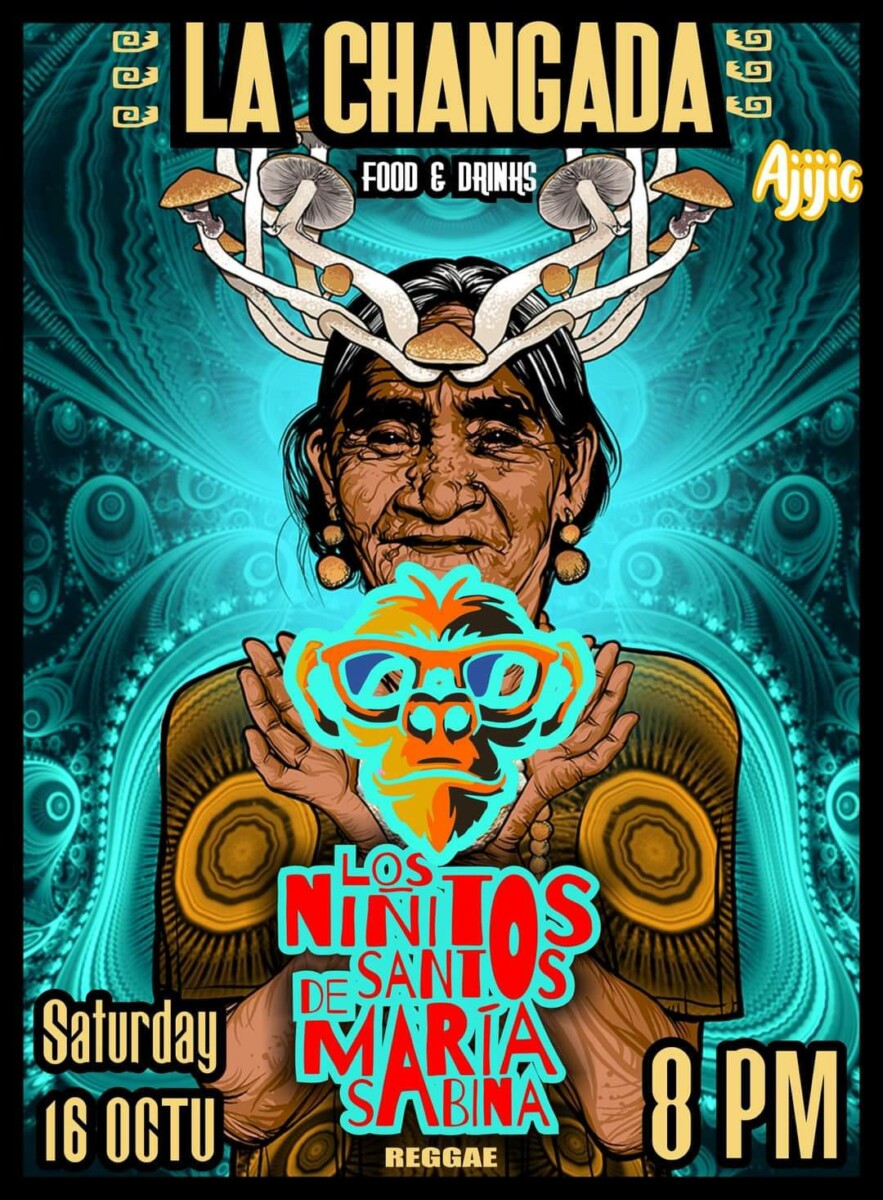 However, the neighborhood of La Cristina has not fared as well, as the neighborhood (also west of town) was difficult to access due to the mud blockage until the beginning of the week.
However, the neighborhood of La Cristina has not fared as well, as the neighborhood (also west of town) was difficult to access due to the mud blockage until the beginning of the week.
Residents of La Cristina told Laguna that since the day of the mudslide (which flooded at least five neighborhoods), and up to now the authorities have not helped them clean up with heavy machinery, they have had to do it themselves.
«They say they can’t come to clean up here because it is a private street. The heavy machinery that has come to open our street has been because the neighbors paid for them,» said one of the neighbors interviewed.
«Until the beginning of this week, the DIF and social organizations supported us with food supplies and some clothes, because the first week no one stopped by to see how the residents were doing. One family even had to sleep in their car, since their house had been buried in the mud and they had nowhere to go. Here the disaster was the same or even worse than in La Canacinta, since walls were also burst and the mudslide left boulders», said a neighbor of La Cristina.
In a tour made by Semanario Laguna on October 13, the people who live in La Cristina were still cleaning their homes and streets, and picking up the garbage that the current left behind. In addition, the mud, which according to the marks on the walls, reached more than one meter high, has begun to expel foul odors.
In nearby La Canacinta, the streets are already free of landslide damage and some households continue with cleaning their homes. At the beginning of the week, neighbors of La Canacinta also received medical support from Servicios Medicos de Chapala, because people began to present respiratory and stomach infections due to the contact with the mud. The Axixic Chimalli group, along with many other civilians, donated the medicines. They also received household appliances, beds, clothes and food from donations by private individuals.
Translated by Kerry Watson
© 2016. Todos los derechos reservados. Semanario de la Ribera de Chapala
